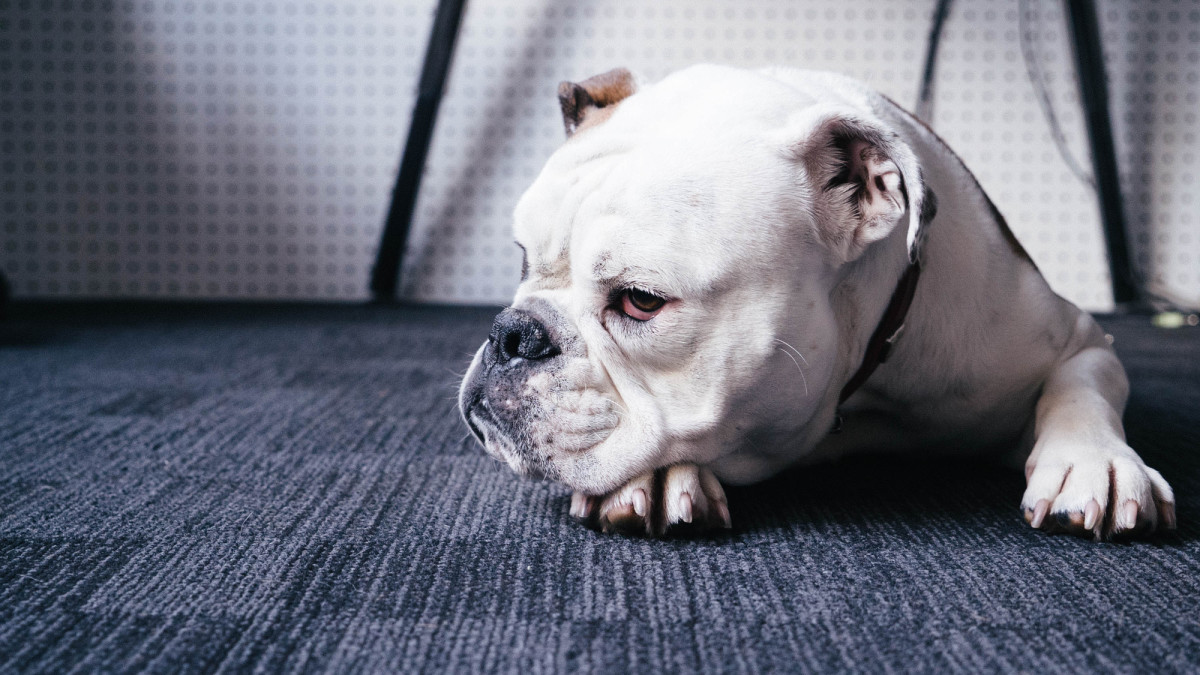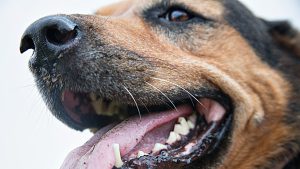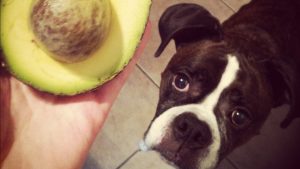
Why Does My Dog Have Little Scabs and Bumps on His Chin?
What’s Wrong With My Dog’s Chin?
“I have an English Bulldog/Great Dane mix. He has developed these sores and bumps under his chin. Do you know what this is?”—Kayla
Photo by Owner

Canine Chin Acne
The most likely cause of those spots on the chin is canine chin acne. That inflamed area lower down on the neck may be from demodectic mange or one of the other diseases that are causing the acne lesions.
Some dog breeds are prone to acne, but it can happen in many breeds. Great Danes and Bulldogs are both among the dogs that can develop this condition. The hair follicles in those breeds become inflamed and infected, swell up, and break open. There are several things that can cause that, including:
- Demodectic Mange: These tiny mites live in the hair follicles and, when they become infected, can cause secondary acne. It is the most common cause of acne but can be treated.
- Contact Allergy: This can be caused by a food or water bowl, one of his plastic toys, or even grass. If you are using a cheap plastic water bowl, it sometimes helps to switch to a ceramic bowl.
- Yeast Infection: Although most Malassezia infections will present differently, it can be one of the factors in canine acne. If your dog has an ear infection or a smelly infection on the belly or underarms this may be contributing to the acne. You can find some tips to treat yeast at home in this article.
- Pemphigus Foliaceous or Other Autoimmune Disease: The acne will usually go away but may come back. You did not mention any other lesions, like the nose or the top of the muzzle, so I would not worry about this for now, but it may need to be looked into if she does not get better.
- Cancer or a Benign Skin Tumor: This is unlikely, but a disease like histiocytosis is a possibility if it is not clearing up. It does not look like this is even a problem in your photos, but if it is not clearing up with traditional or alternative treatments, your veterinarian will need to biopsy the skin so that a pathologist can look for cancer cells.
- Ringworm: This fungus is also a possibility but I would also expect you to mention patchy hair loss in other parts of the body.
Acne Remedies
After treating one of those problems listed above, there are several good methods available to clear up acne:
- Antibiotics and Medicated Wipes: After searching for the problem that has led to the acne, your dog will most likely need to be treated with antibiotics, medicated wipes, and possibly an ointment. Expect your dog to be on antibiotics for about 4 to 8 weeks, and if not responding, he may need a culture to be sure the bacteria is not resistant to the medication.
- Aloe Vera and Coconut Oil: There are several alternative treatments available if the lesions are not yet broken open and draining. The best, in my opinion, is aloe vera. Aloe vera has good activity against Staphylococcus aureus, the most common type of bacterial infection in dog acne skin infections. (2) You can use the gel from a fresh plant or buy aloe vera gel on Amazon or in most drugstores. (Do not use the leaves from the fresh plant as they contain latex and will cause diarrhea and other problems in dogs.) Coconut oil is also very effective. It has some antibacterial and antifungal properties and improves the skin quality.
Target the Mange First
There is no way this can be definitively diagnosed without an exam and a skin scraping. The most common diagnosis, however, is demodectic mange and a secondary bacterial infection. The first step would be to treat the demodex, if that is his underlying problem. This used to be something very difficult to treat but not can be treated easily, sometimes with a single pill. (1) You can get a medication like Simparica, Bravetco, or Nexgard at your local vet.
If you do not have a veterinarian available, you can buy this medication online in some countries.
Visit Your Vet
The fastest way to clear this up is going to be to take her to your local veterinarian, have the skin examined, and then use the prescription he is given. If you do not have a veterinarian available or you cannot take her in at this time you can try the alternative treatment and see how he responds. If your dog is not improving after a few weeks, however, you are going to have to investigate the underlying cause (see the list above) and treat that.
After this has cleared up, it can still come back as he is genetically prone to the problem. The best thing to do is clean the chin daily with benzyl peroxide or at least wipe off the chin each day with chlorhexidine wipes.
Although this looks very serious based on the photos, this is actually going to be fairly easy to take care of with some effort on your part. Although you will need to watch it and keep the chin clean to make sure it does not come back later, it can be cleared up and he can live a normal life.
Sources
- Becskei C, Cuppens O, Mahabir SP. Efficacy and safety of sarolaner against generalized demodicosis in dogs in European countries: a non-inferiority study. Vet Dermatol. 2018 Jun;29(3):203-e72. https://pubmed.ncbi.nlm.nih.gov/29423956/
- Arbab S, Ullah H, Weiwei W, Wei X, Ahmad SU, Wu L, Zhang J. Comparative study of antimicrobial action of aloe vera and antibiotics against different bacterial isolates from skin infection. Vet Med Sci. 2021 Sep;7(5):2061-2067. https://www.ncbi.nlm.nih.gov/pmc/articles/PMC8464272/
This article is not meant to substitute for diagnosis, prognosis, treatment, prescription, or formal and individualized advice from your veterinarian. Animals exhibiting signs and symptoms of distress should be seen by a veterinarian immediately.
© 2024 Mark dos Anjos, DVM


